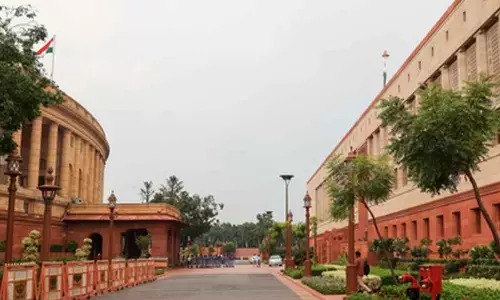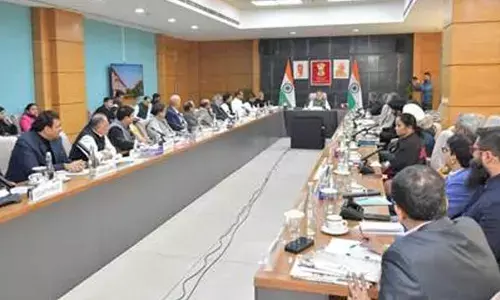Geographical Indication handloom products exhibited

The Geographical Indication (GI) tag can be used effectively as a marketing tool for enhancing sales and raising incomes of weavers, said GITAM Deemed to be University Vice-Chancellor Prof K Sivaramakrishna here on Wednesday
Visakhapatnam: The Geographical Indication (GI) tag can be used effectively as a marketing tool for enhancing sales and raising incomes of weavers, said GITAM Deemed to be University Vice-Chancellor Prof K Sivaramakrishna here on Wednesday. He inaugurated GI handloom and handicrafts exhibition at GITAM School of Gandhian Studies as part of National Handloom Day.
He mentioned that the legal protection through a GI tag prevents similar products from free-riding on the reputation of the GI product. He observed that the Geographical Indication (GI) is an IPR which identifies a product as originating in a certain region where the quality, reputation or other characteristics of the same are essentially attributable to its geographical origin. By protecting handloom GI products, we would also keep alive the rich cultural heritage and traditions associated with these products, he added.
GITAM School of Gandhian Studies In-Charge Director Dr B Nalini expressed that Mahatma Gandhi envisaged villages as self-sufficient by developing the rural economy such as khadi, handloom and handicraft. She said that India enacted the Geographical Indications of Goods (Registration & Protection) Act in 1999. She mentioned that around 54 handloom products got GI tag. This represents a rich diversity of handloom tradition across India, she added.
All 54 GI tag handloom and handicraft material including Kashmir Pashmina and Kani shawl (J&K), Kullu shawl (HP), Kota Doria (Rajasthan), Tangalia and Kachchh shawls (Gujarat), Paithani saree (Maharashtra), Ilkal saree (Karnataka), Kancheepuram Silk (TN), Gadwal saree (Telangana), Pochampally Ikat and Uppada Jamdani saree (AP), Gopalpur Tussar fabric and Bomkai saree (Odisha), Baluchari saree (West Bengal), Chanderi fabric (MP) and Kosa silk (Chhattisgarh) exhibited in the Gandhi Museum to educate the students and staff on Geographical Indication.














